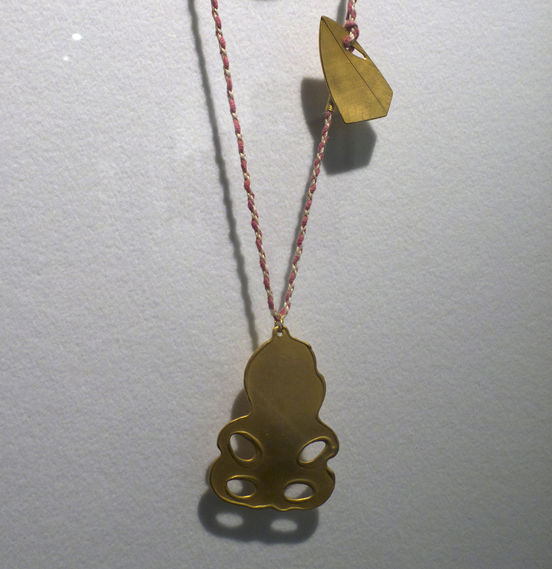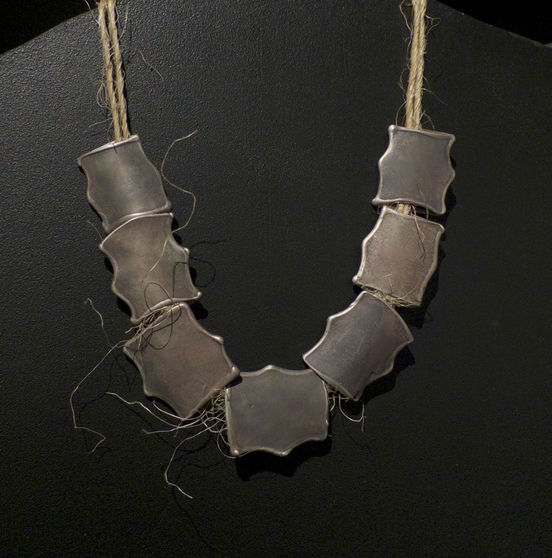Contemporary jewellery practice informed by Māori enquiry
Pepeha are Māori customary forms of oral expression that embody cultural perspectives by locating individuals within the landscape and within whakapapa, the genealogical context of eponymous ancestors. Pepeha speak to specific iwi (tribe), hapū (subtribe) and whānau (family) histories thus they are statements of culture and identity. Whakapaipai has its origins in Areta Wilkinson's Doctorate of Philosophy (Fine Arts) research and contextualises narrative and personal adornment as similar statements of collective identity from a Māori world view.
Areta says her practice has developed into explorations of craft methodology forming out of collective Ngāi Tahu cultural values. Much of her current work involves collaborative processes from responding to narratives told and written, to working alongside and with other creative professionals. The result is an expanded practice full of surprises and development. The artwork sits between traditional Māori adornment produced in the present, and the histories and practices of New Zealand contemporary jewellery. Whakapaipai brings together contemporary jewellery, photograms and cyanotype blueprints.
--
Areta's practice extends over twenty years, her work is seen in national public galleries and collections such as the 3rd Auckland Triennial, City Gallery Wellington, Auckland Museum, Dowse Art Museum and Museum of New Zealand Te Papa Tongarewa. Wilkinson has been a design lecturer and recently completed a PhD in Fine Arts through Massey University Te Putahi-a-Toi School of Māori Studies. Her PhD exhibition held at Koukourārata Marae 2014 was a first for Massey University.
--
A publication for this exhibition is available to view or download here.

Areta Wilkinson, Hine-Ahua, 2013.

Areta Wilkinson, Mau Kaki, 2013.